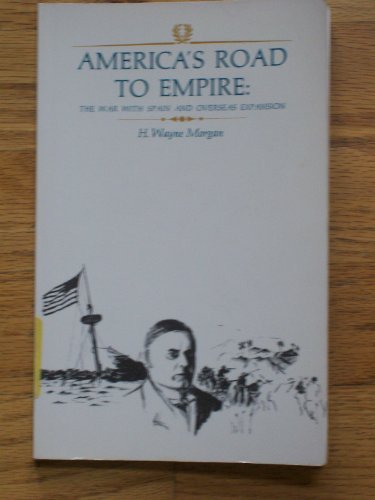Introduction to Glycobiology
Taylor, Maureen E.
Drickamer, Kurt
1. Concepts Of Glycobiology -- 1.1. Field Of Glycobiology Encompasses The Multiple Functions Of Sugars Attached To Proteins And Lipids -- 1.2. There Are Three Major Classes Of Glycoconjugates -- 1.3. Glycans Are Composed Of Monosaccharides With Related Chemical Structures -- 1.4. Glycosidic Linkages Between Monosaccharides Exist In Multiple Configurations -- 1.5. Formation Of Glycosidic Linkages Requires Energy And Is Catalysed By Specific Enzymes -- 1.6. Understanding Structure-function Relationships For Glycans Can Be More Difficult Than For Other Classes Of Biopolymers -- 1.7. Glycan Structures Are Encoded Indirectly In The Genome -- 2. N-linked Glycosylation -- 2.1. Diverse N-linked Glycans Have A Common Core Structure -- 2.2. Assembly Of N-linked Glycans Occurs In Three Major Stages -- 2.3. Precursor Oligosaccharide For N-linked Glycans Is Assembled On The Lipid Dolichol -- 2.4. Dolichol-linked Precursor Oligosaccharide Is Transferred To Asparagine Residues Of Polypeptides -- 2.5. Core Oligosaccharide Structure Is Modified By Glycosidases And Glycosyltransferases -- 2.6. Hybrid Structures And Polylactosamine Sequences Are Common Extensions Of The Core Oligosaccharide -- 2.7. Abo Blood Groups Are Determined By The Presence Of Different Terminal Sugars On Glycans Of Red Blood Cells -- 2.8. Hundreds Of Glycosyltransferases Generate Highly Diverse N-linked Glycans -- 2.9. N-linked Glycans Of An Individual Glycoprotein Are Usually Heterogeneous -- 2.10. Nature Of N-linked Glycans Attached To An Individual Glycoprotein Is Determined By The Protein And The Cell In Which It Is Expressed -- 2.11. High Mannose Structures Are Present In Lower Eukaryotes, But The Glycosylation Machinery Has Evolved To Produce Complex Glycans In Higher Organisms -- 2.12. N-linked Glycans Are Essential For Development Of Multicellular Organisms 3. Conformations Of Oligosaccharides -- 3.1. Three-dimensional Structures Of Oligosaccharides Are Called Conformations -- 3.2. Monosaccharides Assume A Limited Number Of Conformations -- 3.3. Torsion Angles Are Used To Describe Conformations Of Glycans -- 3.4. Local Steric And Electronic Interactions Limit The Possible Conformations Of Glycosidic Linkages -- 3.5. Conformation Of An Oligosaccharide Is Influenced By Interactions Between Hexoses Distant From Each Other In The Covalent Structure -- 3.6. Co-operative Interactions Determine The Overall Folds Of Oligosaccharides -- 3.7. Oligosaccharide Conformations Are Dynamic -- 3.8. Short- And Long-range Interactions Also Determine The Conformations Of Polysaccharides -- 3.9. Conformations Of A Small Number Of Oligosaccharides Have Been Analysed By X-ray Crystallography And Nuclear Magnetic Resonance -- 4. Strategies For Analysis Of Glycan Structures -- 4.1. Enzymes Are Used To Analyses Structures Of N-linked Glycans -- 4.2. Isolated Oligosaccharides And Intact Glycoconjugates Can Be Analysed With Lectins -- 4.3. Mass Spectrometry And Nuclear Magnetic Resonance Spectroscopy Are Useful Physical Methods For Establishing Glycan Structures -- 4.4. Small Oligosaccharides Can Be Synthesized Using Chemical Methods -- 4.5. Enzymes Provide An Alternative Method For The Synthesis Of Oligosaccharides -- 4.6. Neoglycoconjugates Can Be Created By Chemically Linking Sugars To Proteins Or Lipids -- 5. O-linked Glycosylation -- 5.1. Mucins Are Large, Heavily O-glycosylated Proteins That Hold Water -- 5.2. Some Cell Surface Proteins Have Mucin-like Domains -- 5.3. Many Soluble And Cell Surface Glycoproteins Contain Small Clusters Of O-linked Sugars -- 5.4. Biosynthesis Of Mucin-type Sugars Occurs By Sequential Addition Of Monosaccharides To Proteins In The Golgi Apparatus 5.5. Proteoglycans Are Heavily O-glycosylated Proteins That Give Strength To The Extracellular Matrix -- 5.6. Cell Surface Proteoglycans Interact With Growth Factors -- 5.7. Biosynthesis Of Proteoglycans Requires Several Modifying Enzymes In Addition To Glycosyltransferases -- 5.8. O-linked Fucose-based Glycans Are Important For Extracellular Signalling During Development -- 5.9. Unusual Types Of O-linked Glycosylation Are Found On Some Proteins -- 5.10. Cytoplasmic And Nuclear Proteins Can Be Modified By Addition Of O-linked N-acetylglucosamine -- 6. Glycolipids And Membrane Protein Glycosylation -- 6.1. Most Integral Membrane Proteins Are Glycosylated -- 6.2. Polysialylation Of Neural Cell Adhesion Molecule Prevents Cell Adhesion -- 6.3. Membranes Contain Glycolipids As Well As Glycoproteins -- 6.4. Glycosphingolipid Biosynthesis Occurs In The Golgi Apparatus -- 6.5. Cell Surface Glycolipids Are Important For The Development Of The Nervous System -- 6.6. Defects In Glycolipid Breakdown Cause Disease -- 6.7. Some Proteins Are Attached To Membranes Through Glycolipid Anchors -- 6.8. Glycolipid Anchors Are Added To Proteins In The Endoplasmic Reticulum -- 6.9. Proteins Attached To Glycolipid Anchors Are Localized To The Plasma Membrane -- 6.10. Disease Paroxysmal Nocturnal Haemoglobinuria Is Caused By A Glycolipid Anchor Deficiency -- 7. Effects Of Glycosylation On Protein Structure And Function -- 7.1. Various Approaches Can Be Used To Study The Effects Of Glycosylation -- 7.2. Sugars Stabilize The Structure Of The Cell Adhesion Molecule Cd2 -- 7.3. Oligosaccharide Replaces An [alpha]-helix In Some Variant Surface Glycoproteins Of Trypanosomes -- 7.4. Attachment Of A Monosaccharide Can Increase Protein Stability -- 7.5. Stability Of Ribonuclease Is Increased By N-glycosylation 7.6. Protein-protein Interactions Can Be Modulated By Oligosaccharides -- 7.7. Oligosaccharides Covering Surfaces Can Protect Against Proteolysis -- 8. Glycoprotein Trafficking In Cells And Organisms -- 8.1. Animal Lectins Have Diverse Structures And Functions -- 8.2. Lectins Have Important Functions In The Secretory Pathway -- 8.3. Calnexin And Calreticulin Help Glycoproteins Fold In The Endoplasmic Reticulum -- 8.4. Lectins Are Involved In Degradation Of Misfolded Glycoproteins -- 8.5. L-type Lectins Transport Glycoproteins From The Endoplasmic Reticulum To The Golgi -- 8.6. Mannose 6-phosphate Residues Target Lysosomal Enzymes To Lysosomes -- 8.7. Two Types Of Mannose 6-phosphate Receptor Take Part In Lysosomal Enzyme Targeting -- 8.8. Asialoglycoprotein Receptor Clears Altered Serum Glycoproteins Into The Liver -- 8.9. Mannose Receptor Removes Naturally Occurring Glycoproteins From Circulation -- 8.10. Mannose Receptor Also Regulates Activity Of Sulphated Hormones -- 8.11. Some Intracellular Lectins Have Roles In The Nucleus -- 9. Carbohydrate Recognition In Cell Adhesion And Signalling -- 9.1. Selectins Are Cell Adhesion Molecules For White Blood Cells -- 9.2. Specific Carbohydrate Ligands For The Selectins Have Been Identified -- 9.3. Selectins Are Also Signal Transduction Molecules -- 9.4. C-type Lectins Participate In The Process Of Antigen Presentation -- 9.5. Dc-sign And Dc-signr Enhance Human Immunodeficiency Virus Infection Of T Cells -- 9.6. Siglecs Are Cell Adhesion And Signalling Molecules -- 9.7. Sialoadhesin Is An Adhesion Receptor On Macrophages -- 9.8. Myelin-associated Glycoprotein Has Roles In The Central And Peripheral Nervous Systems -- 9.9. Cd22 Is A Signalling Molecule On B Cells -- 9.10. Extracellular Galectins Have Roles In Cell Adhesion And Cell Signalling 9.11. Mannose-binding Protein Is A Host Defence Molecule -- 9.12. Mannose-binding Protein Initiates The Lectin Pathway Of Complement Activation -- 9.13. Mannose Receptor Helps Macrophages To Internalize Pathogens -- 10. Mechanisms Of Sugar Recognition In Animal Lectins -- 10.1. Lectin Classification Is Based On Primary Structure -- 10.2. C-type Carbohydrate-recognition Domains Bind Two Hydroxyl Groups Of A Monosaccharide In Complex With Ca[superscript 2] -- 10.3. Small Number Of Residues In A C-type Carbohydrate-recognition Domain Determines The Types Of Ligand That Are Bound -- 10.4. Some Features Of Monosaccharide Binding Are Similar In All Types Of Carbohydrate-recognition Domains -- 10.5. Binding Of Oligosaccharide Ligands To The Selectins Requires Additional Interactions With The Carbohydrate-recognition Domains -- 10.6. Extended Binding Sites Are Found In Many Lectins -- 10.7. Valency And Oligomer Geometry Determine Specificity And Affinity Of Lectins For Oligosaccharides -- 11. Glycobiology Of Plants, Bacteria, And Viruses -- 11.1. Plant And Microbial Glycans Have Some Functions Not Seen In Mammals -- 11.2. Plants Use Oligosaccharides As Signalling Molecules -- 11.3. Common Plant Lectins Are Useful Tools For Biologists -- 11.4. Some Plant Lectins Are Toxins -- 11.5. Many Bacterial Toxins Are Lectins -- 11.6. Bacteria Use Lectins To Bind To Host Cell Surfaces -- 11.7. Viruses Use Lectins To Target Cell Surfaces -- 11.8. Lectins Appeared Early In Evolution But Have Diverse Functions In Higher Organisms -- 12. Glycosylation And Disease -- 12.1. Mutations In Enzymes For Synthesis Of N-linked Glycans Cause Congenital Disorders Of Glycosylation -- 12.2. Abnormal Expression Of A Glycosyltransferase Causes A Blood Clotting Defect -- 12.3. Chemical Glycation Of Proteins Occurs In Diabetes 12.4. Antibodies To Carbohydrates Can Cause Disease -- 12.5. Igg Glycosylation Is Altered In Rheumatoid Arthritis -- 12.6. Changes In Glycosylation Are Associated With Cancer -- 12.7. Monitoring Changes In Glycosylation May Be Useful For Cancer Detection And Treatment -- 13. Future Of Glycobiology -- 13.1. Important Clues About Roles For Specific Glycans Will Continue To Come From Biochemical And Genetic Studies -- 13.2. Genomics Is Starting To Provide New Insights Into Glycobiology -- 13.3. Glycomics Promises A Global View Of Glycobiology -- 13.4. Model Organisms Will Be Most Useful In The Analysis Of More Primitive Functions Of Glycosylation -- 13.5. Molecular Understanding Of How Glycans Function Will Require Further Elucidation Of Structure -- Function Relationships -- 13.6. Our Increasing Knowledge About Glycobiology Is Being Applied To Practical Issues. Maureen E. Taylor And Kurt Drickamer. Includes Bibliographical References And Index.
Sugar in the body, Sugar--Microbiology, Glycosylation, Carbohydrates--chemistry, Carbohydrates--physiology, QP702.G577 T39 2003, 2003 O-494, QU 75 T244i 2003, 572.565
| Name in long format: | Introduction to Glycobiology |
|---|---|
| ISBN-10: | 0199258686 |
| ISBN-13: | 9780199258680 |
| Book pages: | 160 |
| Book language: | en |
| Edition: | 1 |
| Binding: | Paperback |
| Publisher: | Oxford University Press |
| Dimensions: | Height: 6.6 Inches, Length: 9.6 Inches, Weight: 0.86421206704 Pounds, Width: 0.3 Inches |


















